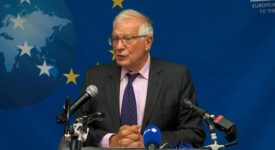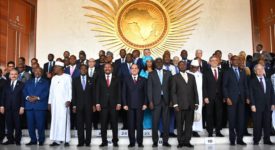Jos Boonstra (FRIDE)
The EU strategy towards Central Asia has already been revised four times. During the past eight years, the EU has been successful in forming institutionalized processes designed to strengthen mutual relations between the countries of the region and the Union, though, on a more general level, the assessment is rather negative. The stability of the countries has deteriorated over the given period, whereby this could be attributed to their attitude towards democratic values and human rights. The EU strategy of 2007 was introduced as a comprehensive plan, which guaranteed seven main points of cooperation, covering many areas, from trade to security interests. Although this strategy was very ambitious, it essentially lacked vital instruments needed for the implementation of the set objectives and some question whether the strategy has been functioning as a mere set of recommendations for EU policies.
It is obvious that EU’s relations with Central Asia should be developed on a bilateral level as opposed to the regional level, the reason being the wide political diversification of the region where every state requires an individual approach. This strategy should be primarily based on fulfilling target projects, consultations, discussions, and funding, which should correspond with similar individual policies in the region. The EU should thus cooperate with two and more states on objectives that are could be effectively achieved in these respective countries. The Union’s main programs include, among others, the questions of the rule of law, education, environment, and water resources. Retrospectively, one can say that the issues related to the two latter areas in the Central Asian region are equally important for both sides, whereas in the case of the rule of law, the EU is differing in its view of the importance of democratic values. The area of education has not since 2007 been regarded as significant by any of these countries.
Until 2013, the development assistance to the region reached € 750 million, from which 1/3 was used for the management of regional projects and programs and 2/3 were allocated to bilateral initiatives. Between 2014 and 2020, the EU plans to invest € 1 billion in Central Asia, although, based on the previous experience, the EU will significantly narrow the number of goals to the most important ones. Although it is not exactly clear what rational reason lies behind these great investments in the region, which is not a priority for the Union, there are several recommendations, which could enhance the cooperation in the future. Among these are bilateral partnerships and closer ties with the civil society of individual states, where the strengthening of human rights and democratic values, as well as the prevention of violence, are absolutely crucial.
(The study can be downloaded here)






